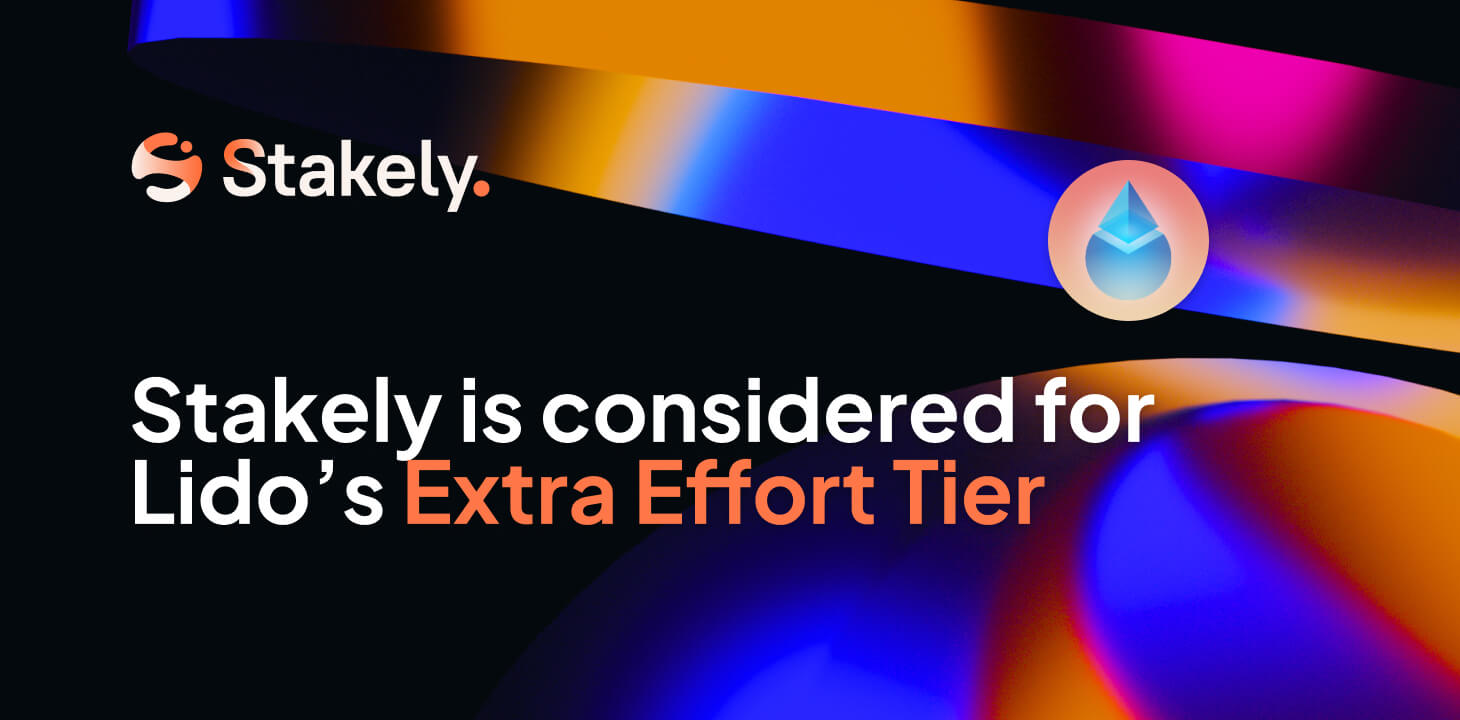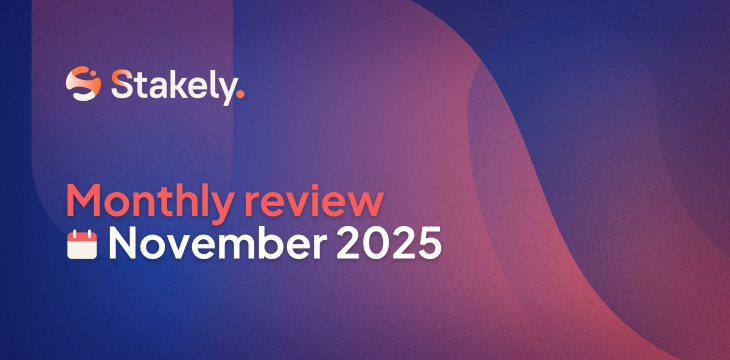5 Ways to stake Ethereum with Stakely in 2026: Secure solutions for every type of user

Do you have ETH and want to make the most out of it? You’ll be glad to know that more and more solutions are making Ethereum staking easier for everyday users.
In 2026, staking no longer means locking up 32 ETH in a node and waiting. The ecosystem has evolved into safer, more flexible, and more professional solutions, with advanced tools to maximize returns while managing risk.
In this guide, we’ll explain in simple terms how Ethereum staking currently works, how stake ETH based on your profile, and what makes the difference between any provider and a truly robust infrastructure.
What is Ethereum staking
Since The Merge, Ethereum has been using a Proof-of-Stake (PoS) consensus mechanism. This model replaced traditional mining with a more efficient and sustainable system, where validators like Stakely lock 32 ETH per validator to participate in proposing and validating blocks. In return, validators receive staking rewards and additional income from MEV, depending on each validator’s configuration, directly contributing to the security and proper functioning of the network.
However, it’s important to note that staking rewards are not fixed and depend on several key factors, such as the total amount of ETH staked, the validator’s performance and setup, or penalties and slashing in case of misconfiguration.
Why is the 32 ETH requirement no longer everything?
While running your own validator still requires 32 ETH, it hasn’t been the only way to stake for a while now. Users with less than 32 ETH—or those who simply don’t want to manage infrastructure—can delegate their stake or participate through pools, liquid staking, or infrastructure providers. This way, staking has become more accessible without sacrificing the protocol-level security.
Ethereum staking options (2026)
In 2026, most stakers participate via pools, liquid staking protocols, or infrastructure providers like Stakely. Here’s a breakdown of each option:
1. Solo staking (with 32 ETH)
If you have the technical knowledge and necessary hardware, you can run your own validator with 32 ETH from home. Another option is using a service like Stakely’s Validator-as-a-Service, where we deploy and manage the node infrastructure for you. In both cases, rewards are sent directly from the Ethereum protocol.
2. Pool staking (no 32 ETH minimum)
If you don’t have 32 ETH or don’t want to operate a validator, you can pool your ETH with other users, staking directly from your own wallet—no need to go through a CEX. In this model, the protocol aggregates deposits from many participants, operates validators on your behalf, and distributes rewards proportionally based on your staked ETH. A good example is StakeWise, which allows staking from just 0.1 ETH, or Lido.
3. Staking-as-a-Service with Stakely
If you’re looking for a direct infrastructure-level relationship, the Staking-as-a-Service model is a solid alternative. Here, we deploy and manage dedicated validators on your behalf. You provide the ETH, and we operate the validators for you: node provisioning and hardening, high availability, MEV optimization, and client diversification.
Protocol rewards are distributed directly to your wallet, minus a clear and transparent service fee.
4. Liquid staking: turn ETH into an operating asset
Liquid staking lets you stake ETH without locking your funds. How? By depositing your ETH and receiving a liquid token in return that represents your staked position and accrues rewards. You can use this token in DeFi applications as collateral or to earn additional yield, all while continuing to earn staking rewards.
With Stakely, you can stake ETH securely via the ecosystem’s top liquid staking protocols: Lido, Swell, StakeWise, and Stader. Here’s how they work:
- Lido Finance: a leading protocol where you don’t need 32 ETH or to run infrastructure. When you deposit ETH, you receive stETH, representing your staked ETH plus rewards. stETH can be used in Curve, Aave, or Balancer, among many other protocols, to access liquidity or earn extra yield.
- StakeWise: combines liquid staking with customizable Vaults. It issues osETH, which separates principal and rewards for more transparent yield tracking. With StakeWise V3, you can delegate to operators like Stakely for high availability and security, and loop your position for increased rewards.
- Swell Network: focused on decentralization, this model prioritizes validator diversity to avoid centralization risks. Staking ETH here gets you swETH, which is usable in DeFi and restaking strategies.
- Stader Labs: lets you stake ETH and receive ETHx, a liquid token widely integrated in DeFi. Node operations are delegated to trusted validators like Stakely, with a focus on transparency, efficiency, and low slashing risk.
5. Restaking to earn extra yield
Restaking allows you to reuse your staked ETH or liquid tokens to support additional services called Actively Validated Services (AVS) and earn extra returns from the same capital. For example:
- Mellow Protocol: a platform focused on liquid restaking with programmable strategies that works with liquid tokens like stETH, swETH, or ETHx. Through Stakely, you can access stVaults that combine liquid staking with restaking opportunities in Symbiotic to boost your yield.
What makes a high-quality infrastructure provider?
To make staking your ETH a value-driven strategy—not just a way to “earn profits”—your operator must have a bulletproof technical and operational stack:
- Diversity of consensus and execution clients to avoid single points of failure
- Access to and optimization of MEV without compromising node security or integrity
- Use of Distributed Validator Technology (DVT) to minimize single points of failure, mitigate correlated slashing, and increase resilience
- 24/7 monitoring, automated alerts, secure key rotation, fault recovery, and readiness for protocol upgrades
- Transparent fees and alignment with community standards, best practices, and upgrades
Staking in 2026 has matured! That’s why choosing where to stake your ETH is no longer just about APR. When you stake with a provider that has proven infrastructure, solid technical know-how, and a forward-looking approach, Ethereum staking becomes a powerful tool to participate in the network and generate risk-adjusted returns.





